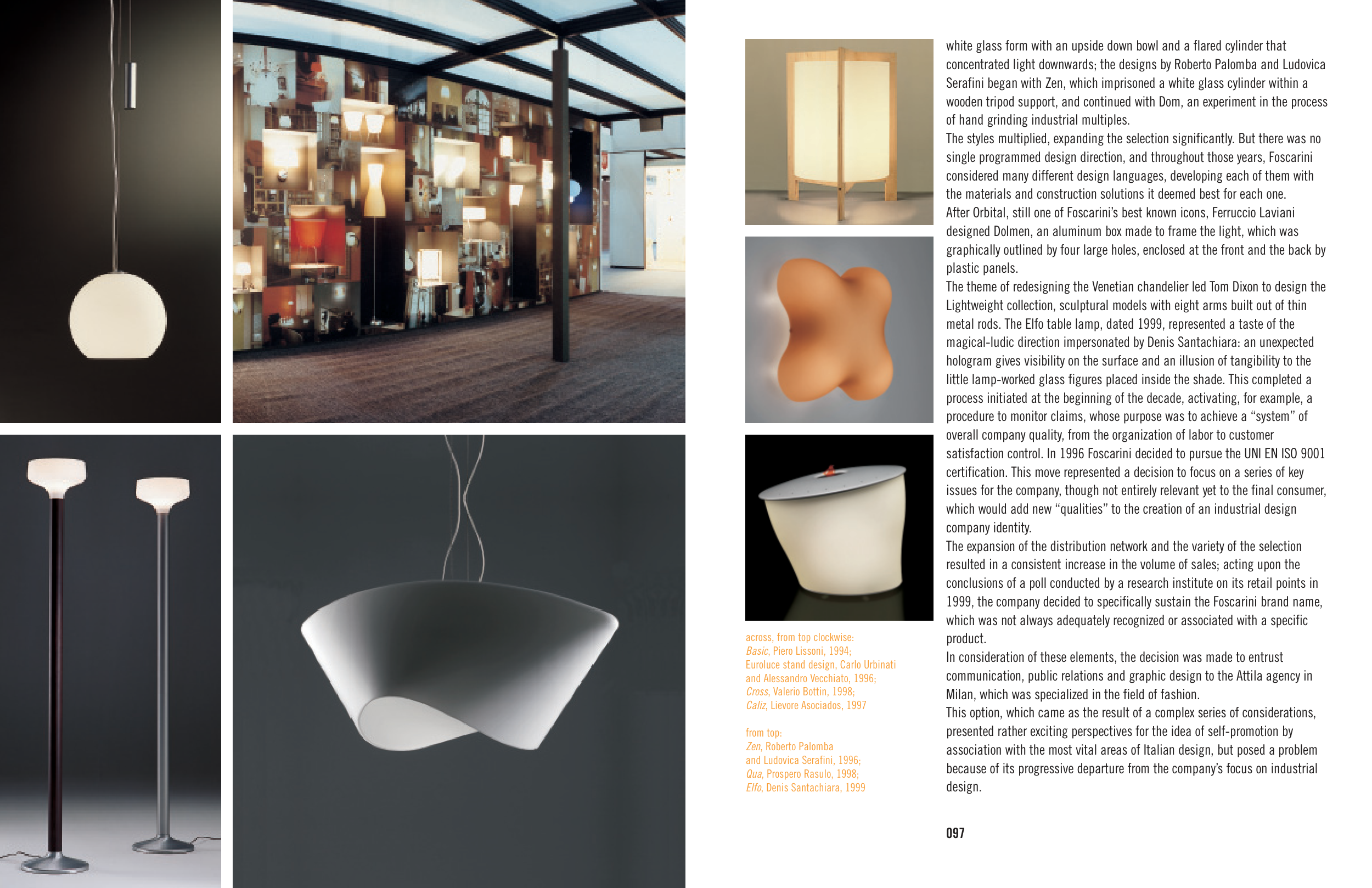097
white glass form with an upside down bowl and a flared cylinder that
concentrated light downwards; the designs by Roberto Palomba and Ludovica
Serafini began with Zen, which imprisoned a white glass cylinder within a
wooden tripod support, and continued with Dom, an experiment in the process
of hand grinding industrial multiples.
The styles multiplied, expanding the selection significantly. But there was no
single programmed design direction, and throughout those years, Foscarini
considered many different design languages, developing each of them with
the materials and construction solutions it deemed best for each one.
After Orbital, still one of Foscarini’s best known icons, Ferruccio Laviani
designed Dolmen, an aluminum box made to frame the light, which was
graphically outlined by four large holes, enclosed at the front and the back by
plastic panels.
The theme of redesigning the Venetian chandelier led Tom Dixon to design the
Lightweight collection, sculptural models with eight arms built out of thin
metal rods. The Elfo table lamp, dated 1999, represented a taste of the
magical-ludic direction impersonated by Denis Santachiara: an unexpected
hologram gives visibility on the surface and an illusion of tangibility to the
little lamp-worked glass figures placed inside the shade. This completed a
process initiated at the beginning of the decade, activating, for example, a
procedure to monitor claims, whose purpose was to achieve a “system” of
overall company quality, from the organization of labor to customer
satisfaction control. In 1996 Foscarini decided to pursue the UNI EN ISO 9001
certification. This move represented a decision to focus on a series of key
issues for the company, though not entirely relevant yet to the final consumer,
which would add new “qualities” to the creation of an industrial design
company identity.
The expansion of the distribution network and the variety of the selection
resulted in a consistent increase in the volume of sales; acting upon the
conclusions of a poll conducted by a research institute on its retail points in
1999, the company decided to specifically sustain the Foscarini brand name,
which was not always adequately recognized or associated with a specific
product.
In consideration of these elements, the decision was made to entrust
communication, public relations and graphic design to the Attila agency in
Milan, which was specialized in the field of fashion.
This option, which came as the result of a complex series of considerations,
presented rather exciting perspectives for the idea of self-promotion by
association with the most vital areas of Italian design, but posed a problem
because of its progressive departure from the company’s focus on industrial
design.
across, from top clockwise:
Basic, Piero Lissoni, 1994;
Euroluce stand design, Carlo Urbinati
and Alessandro Vecchiato, 1996;
Cross, Valerio Bottin, 1998;
Caliz, Lievore Asociados, 1997
from top:
Zen, Roberto Palomba
and Ludovica Serafini, 1996;
Qua, Prospero Rasulo, 1998;
Elfo, Denis Santachiara, 1999


